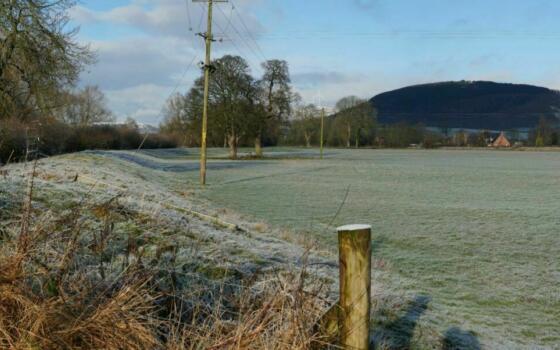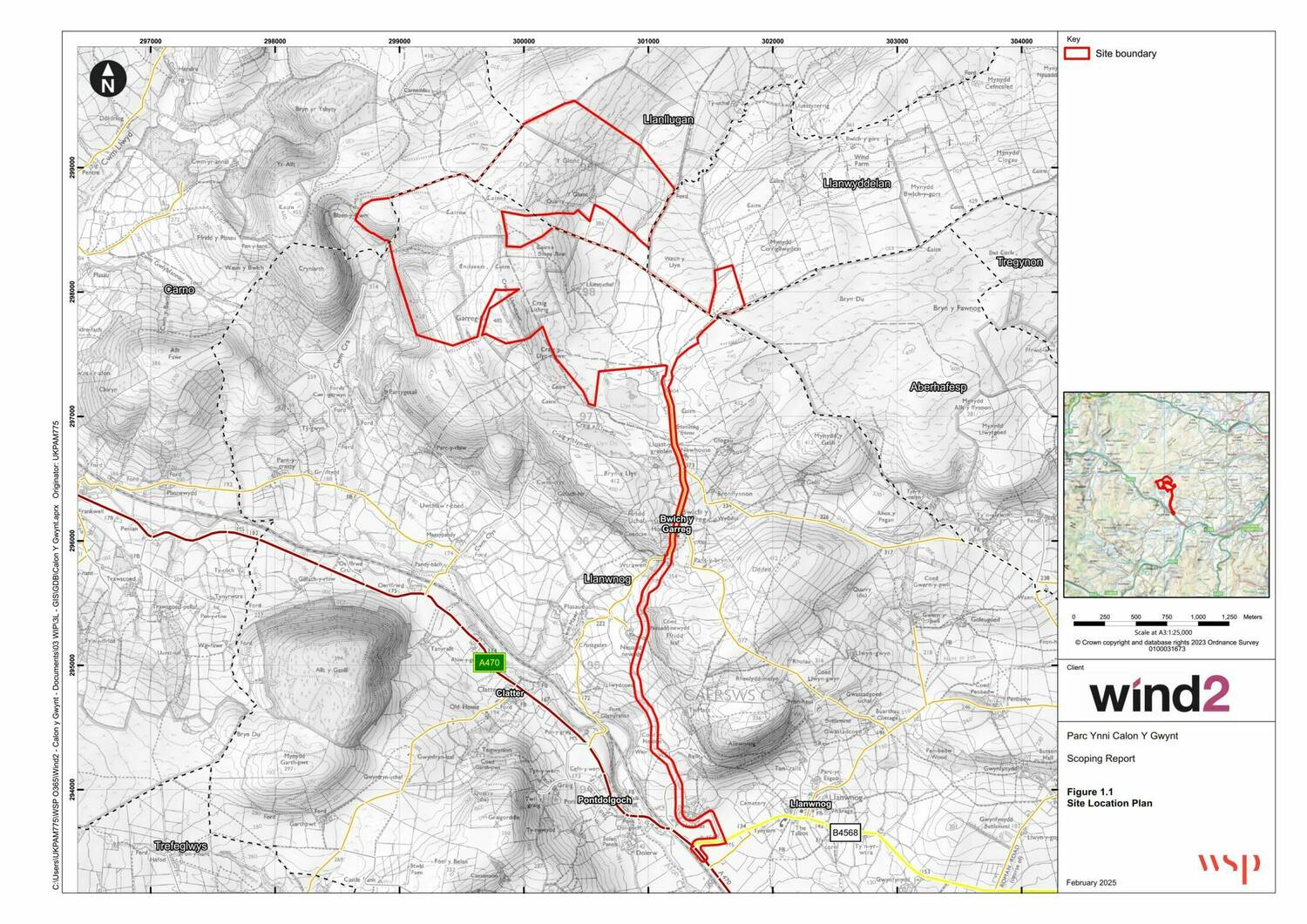Project Info
The proposed Parc Ynni Calon y Gwynt, would be sited approximately 2.7km to the north of Clatter, as shown below. The below map shows the site location and boundary (outlined in red) in the context of the surrounding area. Please note that the red line denotes the site location. For the siting of the wind turbines, please see the site layout plan.
The Proposal
The proposed development is entirely located within a Pre-Assessed Area (PAA) for Wind Energy as defined in the National Development Framework (NDF) – Future Wales: The National Plan 2040 with all turbines located within the PAA 3.
Developments with a generation capacity of over 10MW are classified as being of “National Significance”. As the total export capacity of Parc Ynni Calon y Gwynt is proposed to be more than 100MW, the project will fall within this classification.
Project Details
The Parc Ynni Calon Y Gwynt proposal comprises up to 11 wind turbines with a tip height of up to 200m with a generation capacity of c.80MW, approx. 30MW of ground mounted solar panels and up to 44MW of battery storage. The preliminary design has been developed by a multidisciplinary project team involving technical and environmental disciplines. Prior to the proposals being finalised the project design and evolution will be the subject of various rounds of consultation with the public, as well as other stakeholders such as the relevant local authorities and public bodies.
Project Benefits
It is anticipated that that Parc Ynni Calon y Gwynt will have the potential to generate around 250,000 MWh of electricity annually, sufficient to meet the needs of over 77,000 households, whilst offsetting approximately 47,000 tonnes of CO2 per year**.
Environmental Impact Assessment (EIA)
The project team are currently undertaking a suite of environmental surveys and assessments across the site. The results will be incorporated into the environmental impact assessment (EIA) and the energy park design process. The surveys will inform the final layout that strikes the best balance between maximising renewable energy generation and associated benefits whilst avoiding or reducing any potential adverse impacts.
*Calculated using the most recent statistics from DESNZ showing that annual GB average domestic household consumption is 3,239kWh (as of January 2024, updated annually)
**DESNZ’s “all non-renewable fuels” emissions statistic of 437 tonnes of carbon dioxide per GWh of electricity supplied in the Digest of UK Energy Statistics (July 2024) Table 5.14 ("Estimated carbon dioxide emissions from electricity supplied”)


